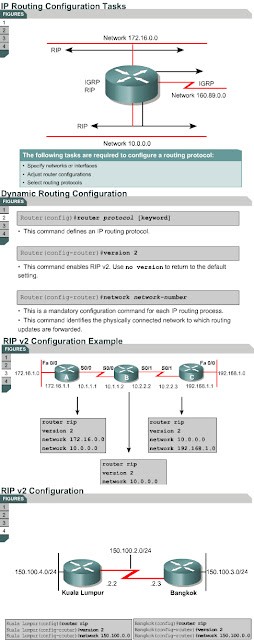Summary
This page summarizes the topics discussed in this module.
Variable-Length Subnet Masks (VLSM), often referred to as
"subnetting a subnet", is used to maximize addressing efficiency. It
is a feature that allows a single autonomous system to have networks with
different subnet masks. The network administrator is able to use a long mask on
networks with few hosts, and a short mask on subnets with many hosts.
It is important to design an addressing scheme that allows for
growth and does not involve wasting addresses. To apply VLSM to the addressing
problem, large subnets are created for addressing LANs. Very small subnets are
created for WAN links and other special cases.
VLSM helps to manage IP addresses. VLSM allows for the setting of
a subnet mask that suits the link or the segment requirements. A subnet mask should
satisfy the requirements of a LAN with one subnet mask and the requirements of
a point-to-point WAN with another.
Addresses are assigned in a hierarchical fashion so that
summarized addresses will share the same high-order bits. There are specific rules
for a router. It must know in detail the subnet numbers attached to it and it
does not need to tell other routers about each individual subnet if the router
can send an aggregate route for a set of routers. A router using aggregate
routes would have fewer entries in its routing tables.
If VLSM is the scheme chosen, it must then be calculated and
configured correctly.
RIP v1 is considered an interior gateway protocol that is
classful. RIP v1 is a distance vector protocol that broadcasts its entire routing
table to each neighbor router at predetermined intervals. The default interval
is 30 seconds. RIP uses hop count as a metric, with 15 as the maximum number of
hops.
To enable a dynamic routing protocol, select a routing protocol,
such as RIP v2, assign the IP network numbers without specifying the subnet
values, and then assign the network or subnet addresses and the appropriate
subnet mask to the interfaces. In RIP v2, the router command
starts the routing process. The network command
causes the implementation of three functions. The routing updates are multicast
out an interface, the routing updates are processed if they enter that same
interface, and the subnet that is directly connected to that interface is
advertised. The version 2 command enables RIP v2.
The show
ip protocols command displays values about routing protocols and routing protocol
timer information associated with the router. Use the debug ip rip
command to display RIP routing updates as they are sent and received. The no debug all or
undebug
all commands will turn off all debugging.




